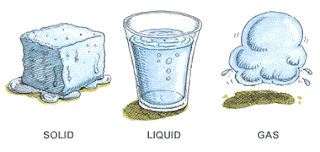Testimi i shtypjes ne Hardware te SLS eshte gati per testim.
Credits: NASA/MSFC/Brian Massey
Inxhinieret jane duke u pergatitur per te vënë presion mbi hardware per raketen me te fuqishme ne bote, Leshimi i Sistemit te Hapesires ose SLS te NASA-s, si pjese e nje serie rigoroze provash per te siguruar çdo strukture qe mund te perballoje streset e pabesueshme te nisjes. SLS dhe anija Orion e agjencise do te udhetojne ne destinacione te reja ne hapesire te thelle se si NASA po vazhdon te pergatiten per udhetimin e saj ne Mars.
“Jo vetem qe kjo seri ka kosto me efektive duke testuar disa artikuj te kualifikimit se bashku, por edhe na ndihmon te kuptojme se si fluturimi i hardware do te kryhet se bashku,” tha Mike Roberts, mekanike ne Drejtorine e Inxhinierise ne qendre e e fluturimeve hapesinore ne Marshall te NASA-s ne Huntsville, Alabama.

Credits: NASA/MSFC/Fred Deaton
Pjeset e SLS jane:
- Core stage simulator — a duplicate of the top of the SLS core stage that is approximately 10 feet tall and 27.5 feet in diameter. It was designed and built at Marshall.
- Launch vehicle stage adapter (LVSA) — connects the SLS core stage and theinterim cryogenic propulsion stage (ICPS). The ICPS is a liquid oxygen/liquid hydrogen-based system that will give Orion the big, in-space push needed to fly beyond the moon before it returns to Earth on the first flight of SLS in 2018. The LVSA test hardware is 26.5 feet tall, with a bottom diameter of 27.5 feet and a top diameter of 16.8 feet. It was designed and built by prime contractor Teledyne Brown Engineering of Huntsville.
- Frangible joint assembly — part of the separation system on the SLS. The flight version will have small explosive devices installed that will separate the ICPS from the rest of the rocket in space. Only the structural part of the frangible joint assembly is included for this test series. It was designed and built by The Boeing Co. in Huntsville and United Launch Alliance of Decatur.
- ICPS — The qualification test article, without the engine, is around 29 feet tall and 16.8 feet in diameter. It will be filled with liquid nitrogen for testing, rather than liquid oxygen and liquid hydrogen. “Liquid nitrogen is the safest cryogenic media to use for testing,” VanCleave said. The ICPS was designed and built by Boeing and United Launch Alliance.
- Orion stage adapter – connects the Orion to the ICPS. It is 4.8 feet tall, with a 16.8-foot bottom diameter and 18-foot top diameter. It was designed and built at Marshall. The adapter technology was used for Orion’s first test flight in December 2014.
- Orion spacecraft simulator – a replica of the bottom portion of the exploration vehicle that will carry the crew to space, provide emergency abort capability, sustain the crew during the space travel, and provide safe re-entry from deep space return velocities. The simulator also was designed and built at Marshall, and is 4.5 feet tall and 18 feet in diameter.
Gati per test…
Rreth 50 testime jane planifikuar . Artikujt e testit do te jene te pajisura me 28 linja mekanike ngarkesash, i cili do te perdore presion hidraulik. Serbatoret e ICPs do te jene te mbushura me azot te lengshem, te cilat do tu nenshtroje hardware-ve nje presion teper te larte- ne krahasim me presionin atmosferik. Me shume se 170,000 £ azot i lengshem do te perdoret ne serbatore, dhe 500.000 £ forca aksiale hidraulike do te aplikohet per te gjithe testin.
Tags:SLS vs Orion,Udhetimi ne Mars,NASA,QendrA e e Fluturimeve Hapesinore Marshall.

